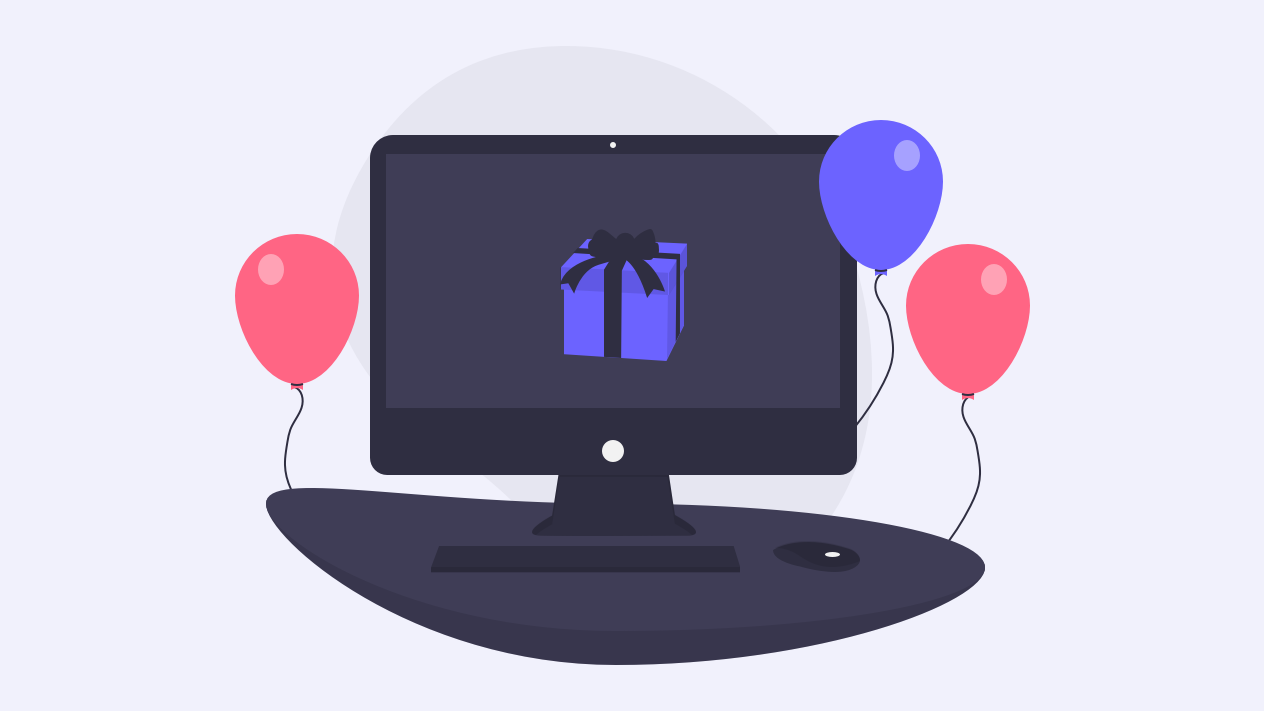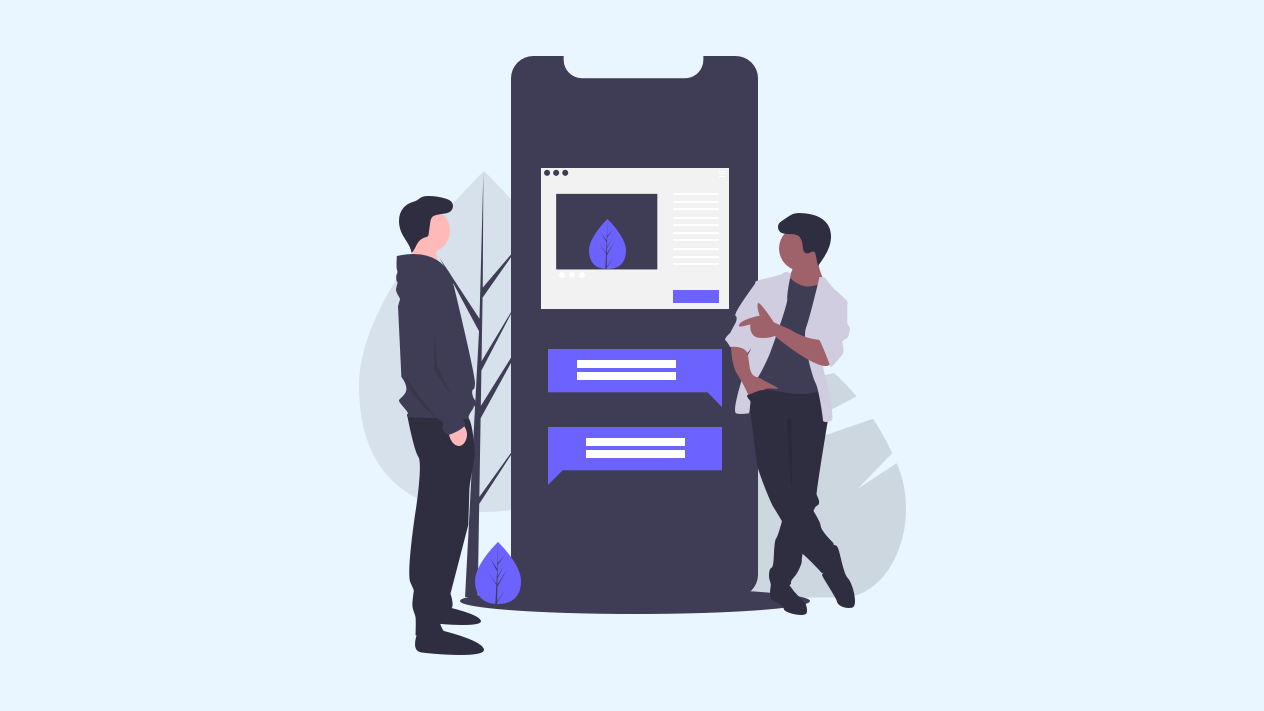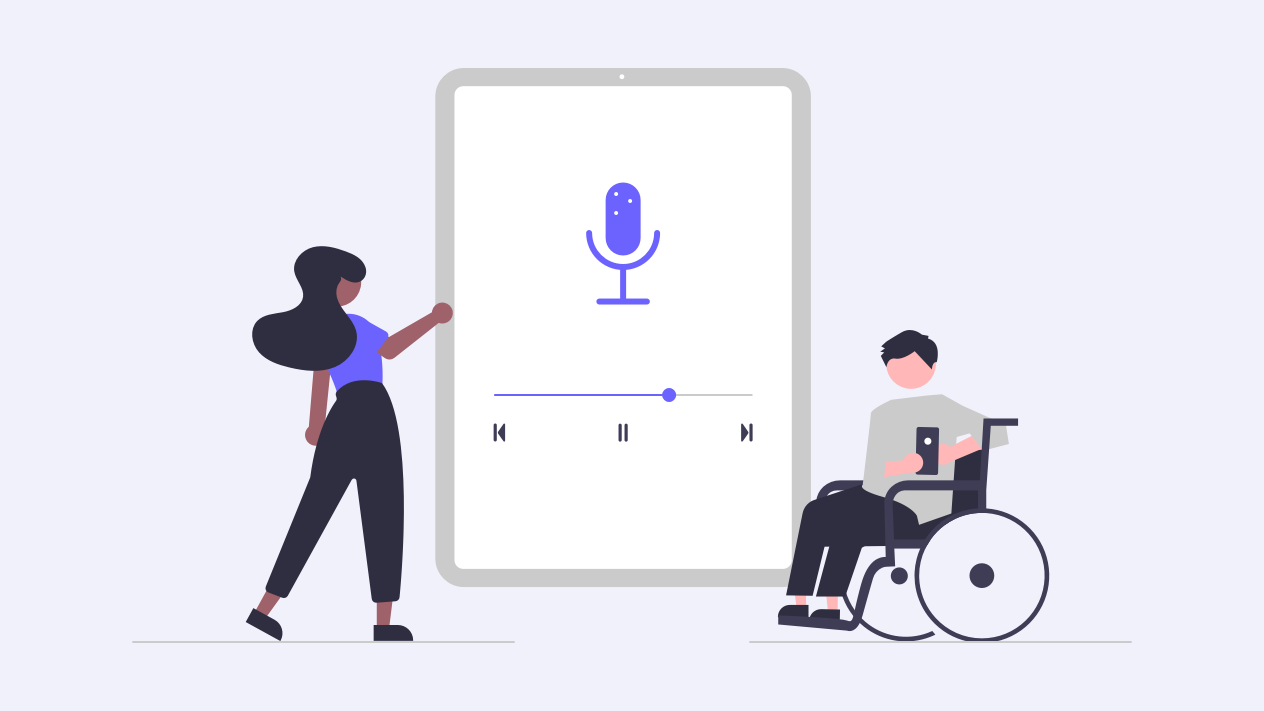As podcasting continues to expand outwards to more and more first-time listeners whose first listen will probably be to an established, funded show, the expectation that podcasts are supported by some form of commercial message will pervade. As new, emerging, pre-revenue or staunch indie podcasters – delete as appropriate – we can leverage that expectation to our advantage, without seeking money from outside sources or waiting to be granted an audience with an advertiser.
And it’s important we do too, as many of us aren’t doing enough of the basic, explicit work involved in growing our audiences, which means asking our existing audience to help out.
In last week’s briefing I pointed to a blog post written by someone who’d received a crappy review, because the host read an ad. We can avoid that seemingly sudden shift to commercialism as and when we do monetise, by adopting the grammar of the commercial break, and harnessing the power of the call-to-action. OK, a bit salesy, but stick with me.
It’s actually really simple: in lieu of an ad break, take a lift break: a short segment in your show dedicated to lifting your podcast, or someone else’s in your community. These techniques will be supercharged if your podcast hosting provider supports dynamic content insertion, but it’s not a prerequisite.
OK, here are some examples.
Example 1: Rate and review us

This is an obvious one, but it warrants more than a passing comment. So many of us just toss out a quick “rate and review us” at the end of our shows (I hope you’re not saying “it really helps us get discovered” because it doesn’t).
Let’s say an average podcast ad is 90 seconds (the specific number doesn’t matter). Instead of taking 7 seconds to say “rate and review us wherever you’re listening” – which means absolutely nothing to the hundreds of thousands of people not specifically using the Apple Podcasts app – spend a minute or so being really clear on the ask: where do you want people to leave reviews? Apple Podcasts? Podchaser? Also be clear on why you want these reviews: do you genuinely want to find out what you could improve about your show to move it from 4 stars to 5, are you seeking valuable social proof to encourage other listeners, do you want testimonials you can reproduce on social media or on your website, or are you just looking for friendly support and a warm glow? All are valid reasons to want reviews, but if you’re not clear on exactly how and why they’re helpful, people are less likely to do it.
You also might need to be specific about how people should leave reviews. If we’re using the grammar of an ad break, time is on our hands, so take that time to walk the listener through what they need to do, what app they need to open, or what link they need to follow. If you’re offering a reward for reviews posted to Twitter, explain clearly what that means, what hashtags need to be included, and whether you want a screenshot of the review.
Why not line your next lift segment up with #PodRevDay, so you get a nice flurry of reviews in on the 8th of each month?
Example 2: Follow us
![]()
Take 20-30 seconds and let people know where you can be found online, either in social media form or in apps and directories. When it comes to social media, be explicit about your handle, don’t just say “find us on Instagram” for example. If your social media handle is a little awkward, link it in the episode description (you should be doing that anyway).
Why not consider running a giveaway to encourage new followers? Pick a specific platform you want more engagement on – be that YouTube, Twitter, or even your newsletter – and give something away to the n th follower: stickers are good; people like stickers, but the quality of the prize can go up with the number of followers: the 100th follower gets a badge, the 1,000th follower gets a t-shirt… you get the idea.
If you’re starting out small, don’t set an unrealistic goal. Take the Kickstarter approach, and only ask for the minimum you can hope for, then leverage stretch goals to go further. And don’t succumb to number-shaming; if 100 Twitter followers is your goal, celebrate the hell out of it when you get there.
Example 3: “Alexa, play [my podcast]”

Take 20-30 seconds and run a segment reminding people they can listen to your podcast on a smart speaker. Commercial radio stations do this really well; they’ll list off the ways in which their content can be reached – “on DAB, on your phone, and on your smart speaker” – followed by a little bloop and someone saying “Play Smooth Radio” (for example). The little bloop sounds like the confirmation or “I’m listening” tone you might hear from a smart speaker, but avoids you having to use a specific wake word.
That kind of formalised, packaged jingle probably won’t work for your show, but it’s a format you can play with. Reminding people that there are more ways your show can fit into their lives is useful for all sorts of reasons, and might convert a casual listener who’s heard your show on the web – and therefore isn’t subscribed – to someone who makes it part of their dish-washing routine.
Example 4: Buy Me a Ko-fi

Yes Patreon and Memberful exist, but I’m of the firm belief that you need a track record and to have demonstrated value for a significant time before you can ask for ongoing donations (your opinion might differ, that’s fine).
One-off donations or even recurring donations that don’t carry a big expectation on the other hand, are an accessible way you can set an expectation of your listeners, that your work has value. Buy Me a Coffee and Ko-fi make this super easy.
I definitely wouldn’t start with this. Again, you want to spend some time racking up goodwill before you ask for cash money, but given a few weeks of consistent output, don’t be afraid to ask. You’re worth it.
As with the review ask, be clear about how they can help, and how their donation will help you. I find it useful to have a goal in mind that would benefit the podcast, or allows the listener to pay it forwards. For example: “if we reach $100 per month, we can pay for transcription, which makes our episodes more accessible to people with hearing disabilities”.
Example 5: Refer a friend

Refer-o-Matic is a service that makes it easy for you to offer rewards to your listeners for the new followers they bring to your show. At $20 per month it’s objectively way overpriced (by about 5x imho), but if you have the means to rig something up yourself, it’s worth looking into.
With a system like this, you would spend a minute asking listeners to refer your podcast to a friend using their own special (trackable-to-you) referral link. Any time someone taps the button corresponding to their podcast app, that sends a signal to the referral system that an action has taken place. If listener A recommends your show and 5 new people take action on that listener’s referral link, listener A gets a prize you determine.
The key difference between this and a generic “tell a friend” request is the trackability, both for you and for the listener referring other people. It feels much more like a real referral scheme (I know some Americans think “scheme” is a dirty word, but it just means “plan” 🙂) with stakes and rules and real rewards. And it doesn’t have to cost you much – outside of the tech to run it – since the benefits don’t have to be monetary. On my previous show, I offered tongue-in-cheek Cameo-style videos as a reward. Be imaginative, and have fun with it.
Example 6: Pop the champagne

A well-run Kickstarter campaign keeps backers constantly informed not only on the progress of the product they’re helping to fund, but also on the goals and stretch goals they’ve set, and/or met.
If you’re starting a new show, you have the opportunity to bring listeners along for the ride, and to give those early adopters a sense of ownership over the content, plus that warm feeling that comes from having liked something before it was cool.
Whether you’re making a show for yourself or someone else, chances are in those early days, the host and most of the listeners probably know each-other (maybe they follow each-other on LinkedIn or they’re part of the same Slack workspace if not the same company). If you choose a hosting provider that supports DAI, you can make those initial segments really personal, then once you’ve hit episode 100 and you can see that new listeners like to check out those initial episodes, consider replacing those segments with another of the examples I’ve given.
Like I said above, when you reach a milestone in terms of Twitter followers, or episode downloads, why not take a lift break to celebrate the achievement, thank those who helped make it happen, and setup the next goal. What happens when you get to 200 Twitter followers or 300 downloads? If you’re taking other lift breaks to mention specific calls-to-action, maybe take this one to just encourage people to stay subscribed to the feed.
Example 7: Events and appearances

Are you appearing on another podcast, or giving a talk at a virtual conference listeners can attend? This is a great use of a lift segment, especially if you can upload time-limited segments to your hosting platform.
There’s a wealth of events you can attend virtually or in person, many of which you’ll find on Podnews’ sister site, pod.events. Let listeners know you’ll be attending, and how they can get in touch. If it’s in person, print up some stickers and encourage listeners to find you and pick up a sticker.
Even better is a panel discussion or talk that’s going to be available on-demand for people to check out. This all adds to your credibility, and potentially gives listeners another way to show their support, by showing up and hanging out. Plus, lots of conferences offer promo codes to speakers.
Example 8: Related campaigns and initiatives

If your podcast centres around a particular topic, like environmentalism, what campaigns are ongoing that you can raise awareness for? If you want to sound like the kind of podcast that has ads – which many do – you can go full-on “In the Arms of the Angel” here if you want 😉
More importantly than you dressing for the part of a monetised podcast, an ad read for a cause or campaign is a valuable way to use your platform. I’d maybe stop short at something overtly partisan in nature, but if a cause is righteous and you know you’re on the right side of history with it, and you’re confident the listeners you value will be enriched by it, then go for it. (I speak as someone who can be preachy at times and is trying to curb that, just because it can be exhausting to listen to.)
I’d also be sure to pick a cause or campaign that’s squarely aligned with your podcast’s purpose, so it feels organic and fitting, rather than crowbarred in.
Example 9: Lift up someone else

A lift segment doesn’t have to be about your own growth. Independent podcasting flourishes when communities work together to lift each-other’s voices, so take the time to call out another podcast you know your listeners will love, and ideally one that subscribes to the same kind of ethos and might be willing to do the same for you (although I would avoid making that a prerequisite).
Relay FM have started doing this in recent months, spending a minute at the end of an episode to explicitly mention another podcast on their network that the listener might enjoy. Here, the hosts give context as to why the show might be of interest, who the hosts are and perhaps the experience and insight they bring to episodes. In that way, it feels more like a recommendation than an ad, and that’s no bad thing.
We’ll be right back and we’re back
Have you ever heard a podcast throw to a commercial break, only to return a second later? That happens because someone’s uploaded the episode, put in the timecode for that break, and relied on a system to insert an applicable ad. All to often, no ad is found and that inventory (the space in the episode) goes unsold.
Big Podcasting is a numbers game, so for them this doesn’t really amount to much, but imagine the missed opportunity. If your podcast host offers dynamic content insertion, this is a really good use of that tech. You can record those spots, upload them, have them stitched into your episodes, and then if and when the time comes for you to monetise, you can swap out one of those lift slots for a commercial read. And because you’ve set that listener expectation from the get-go, it won’t come as a shock. Who knows? You might even raise a smile from some listeners who are pleased you managed to get paid for your work.
Set stakes
If we’re treating these segments like ads, it’s helpful to consider what the stakes would be if you were paying to run this ad on another podcast. If you were paying $30 to advertise your show on someone else’s feed, you’d want to make sure the listener knew exactly how to act on your ad.
You’re serious about your podcast’s growth, so take your lift segments seriously too. That doesn’t mean you have to announce it as some sort of formal advertisement, but don’t treat this as temporary filler.
Tiny case studies: Night Attack and We Have Concerns
Night Attack was a live show with a podcast feed, rather than a native podcast. It recently pivoted to a new format, but I doubt it’ll differ much from what they used to have, which was effectively a two-act structure, bifurcated with a Patreon plug, which was their primary source of income.
Comedy/science podcast We Have Concerns does this in their show, which is a native podcast. In this format, one host will deliver a news story, then the’ll take a minute or so to plug their Patreon, then they swap ends.
In both of these cases, the hosts set expectations and dedicate a proper blocked-out segment of their programming to encourage listeners to donate, and get the resulting benefits.
Final thoughts
There used to be a radio station in the UK called Kerrang! 105.2 which broadcast from my home city. When it first began, they had an automated music playout, with no DJs. Then they brought on presenting talent, but they still didn’t have any ads. So they did fun and innovative things. They set the tone for the station by demonstrating the sort of music they weren’t going to play. They also had occasional skits – called “the Smoking Room” if memory serves – and they encouraged listeners to interact with the station (this is 2004 so pre smartphones and mass social networking).
It took Kerrang! a long time to accrue ads. Like, more than you would expect for a station that had an established brand behind it, and the millions of pounds it takes to start one up from scratch. There was probably a reason for that, in that they likely aimed at a segment of the market that famously had no money, ie students.
But the point is that you can still use the language of commercials, set an expectation for your listeners that there are moments in the show where time is given to keep the show running.
How you implement this will vary depending on the format of your show. If you have a direct dialogue between you and your listeners, you might find that a less formal approach works, whereas a narrative or fiction podcast might benefit from a more formalised break.
If you’re using a DAI marketplace, I’d encourage you to consider – if you have the power – replacing those spots with your own prerecorded ones, along the lines of my examples above. Ultimately I think this will pay you back in greater value than the pennies you’ll get from an ad for a local car dealership.
Ads ultimately serve you and help make your work sustainable. If you can’t find anyone to pay you to advertise them, be your own client, advocate for yourself, and set that expectation early on so that listeners know you’re open to support.

Add your response